aright you guys... I'm back, with empirical data ! 
What are others seeing? TIA.
Regards to all.
OF
I've been aiming for .63 ohms, which gives me roughly 360F by my calculations
That is about spot on to what I've been aiming for. I'm breaking in 9 different V3 units right now with a few more waiting their turn, with base Ω ranging from 0.42 to 0.6, but really around 0.44, 0.45 mostly. I think the 0.6Ω needs the wire trimmed or tightened.
For the temps and kind of hits I'm favoring, (relatively low-temp, tasty) I'm observing resistance rise about
0.16Ω, but I can get nice usable hits with a Ω rise ranging from
0.14-0.18 over cold.

Once my donuts
are at temp and protection, my
wattage flutters between
15-22w, spending alot of time around the middle at 17w alot.
Now as for the TCR....
I know for certain using # 245 is showing us temps
much lower than either the average temps, or hot or cool spots. If we know 245 to be accurate on the 2.5, and I like temps ranging from 380-420 with that figure, why would I only be calling for temps mostly around 310-360F with the larger donut now?

I haven't tried to work out the math yet (I think I have all the variables in place to try?) but I did make good use of the one tool I do have:
infrared thermometer. I can't even configure it, but the bore size matches the V3 base perfect, so if I cover the thermometer opening perfectly with the V3 and point it straight, it gives very steady readings.
With 245 TCR, at 320, 330F I would be seeing around 390-420F readings flutter on my thermo, on an empty, slightly dirty donut. (no airflow of course) It could get pretty steady once it had reached protection.
So, with
a lot of trial and error, on a different clean donut, loading TCR values going lower in increments of 5 and 10, I have found the figure of
!TCR 190! to
mostly make my screen temps and my thermometer temps agree.

Observed temps on the IR do tend to overshoot a little once reaching protection, then can level off rather nicely. I would imagine that during real-world use, the airflow provided by the user will lower temps even further and can minimize the overshoot.
So I know my tool of measurement is not
perfect, since I can't set 'emissivity'

and I'm looking at a broad picture of the donut, not the hot and cool spots (kind of an average, thats good?) so I would love to see what you guys with thermocouples and potentially better IR thermometers will observe.
So then... I put this data to use, loaded up TCR 190 on a cuboid, with a different, broken-in V3 atty, 32w, starting at 380F (which would be on the lower end for me on the v2.5 with TCR 245) and I got a nice Ω rise of 0.16 and great, tasty, clouds that were smooth!


Pretty much exactly what I was getting around 330-340F with TCR 245.
As many of us know, all this vape nerdishness is highly hypothetical and somewhat imprecise, given my tools, but it's nice to be able to call up temps on the mod that I used to use on the v2.5, and have a good adjustment range of +/- 20 or 30F to call up light, flavorful vape and thicker, hotter vape to finish the load.
Not finished yet.....
I loaded up TCR 190 in my eleaf pico, then, after obtaining these figures testing with a VTC mini and a cuboid. On my first dirty donut that I now cleaned and re-installed with the pico, my IR thermo saw temps spiking a good 30-40F over the temp called for on the screen

(hitting protection) before it tapered off to actually being 10F or so under the intended temp


Went back to TCR 245 with the pico, also tried lower watts from 20, 22, 25w, and the temps on my IR would be 60, 80, 100F higher than what the mod says

And it would also peak to around 430F sometimes before settling anyhere from 370-390 when asking the mod to reach 330F

So this leads me to believe the TC on an eleaf pico is
not nearly as swift and accurate as the current lineup of joyetech TC mods.

This poor showing could also be partially explained by my test methods not accurately representing real-world usage conditions, but this degree of temp spiking upon reaching protection was not observed at all on 2 different joyetech mods.

I had previously suspected this from using the pico for a while with the v2.5 when I had used evic's and cubes already for a long time. I liked my joyetech's TC'd @ 25w with the v2.5, but when I did 25w in TC modes on the pico, the initial overshoot would be noticeable

almost to the point of charring clean donuts, so I backed down and settled on 20w with the pico to get good clouds, quick warm ups, but also not burn oil or char the donut easily.
I don't like how the picos are also doing this with the V3 apparently

I'm playing around with TCR figures between 145-160 now for the pico, but, cant decide whether I want to try and minimize the overshoot / peak temp or get a more accurate post-protection temp, or how different TCR #'s in this range will actually work during real usage? More testing is needed

I'd like to see what your guys results and observations with different brands and models of TC mods are as well.
And finally... regarding TCR rates for donuts being straight or curved, IDK really, but from what I observed over alot of v2.5 bases, the Ω rise to achieve the same effects tended to be alot more on a high Ω base as opposed to a low Ω base. The high ones like 0.82 needed at least 0.33-0.36 rise to make the vape I liked. The low ones, like 0.68Ω, could rise as little as 0.29-0.32 to make vape that I like. I even got a couple
flukishly low Ω bases like 0.55, 0.60Ω, that would only need to rise 0.15-0.20 to make my warmth with TCR 245!
So maybe if the rate is linear, maybe the slope of the line is different for different base Ω?
And maybe the rates are not perfectley linear, because of the heat transfer between metal to ceramic?

IDK really but I'm just reading what all you guys are saying and trying to make sense


Thermocouples at the ready.
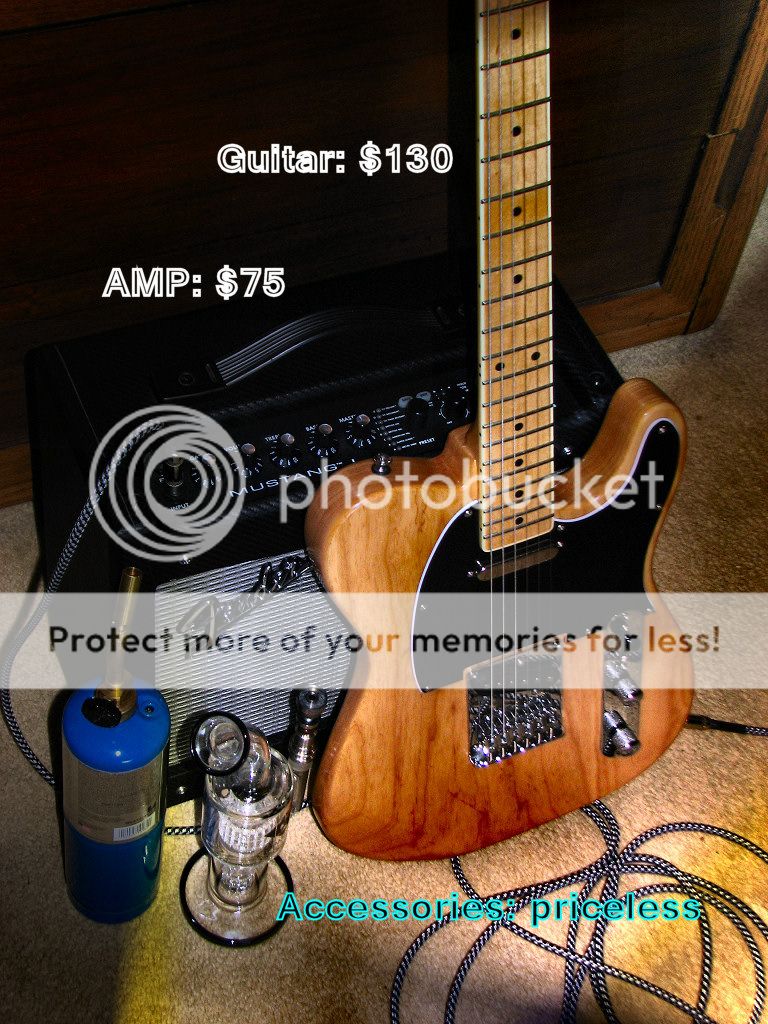



 We could use some help in measuring real world donut temps. Since everyone seems to be using temps lower than what they would use on the 2.5 with the same TC mode / settings, I think we have to lower our TCR #'s if we want the screen to match actual donut temps.
We could use some help in measuring real world donut temps. Since everyone seems to be using temps lower than what they would use on the 2.5 with the same TC mode / settings, I think we have to lower our TCR #'s if we want the screen to match actual donut temps.








 Yup I've been doing that for a while. Seems like the only feasible way to connect the V3 to any rig with readily available parts, but I'm already thinking of some more customized glass bulbs that might allow me to eliminate the bottom silicon strip, hopefully o-rings on the base straight to a 18mm female short tapered joint (if such a thing exists?)
Yup I've been doing that for a while. Seems like the only feasible way to connect the V3 to any rig with readily available parts, but I'm already thinking of some more customized glass bulbs that might allow me to eliminate the bottom silicon strip, hopefully o-rings on the base straight to a 18mm female short tapered joint (if such a thing exists?)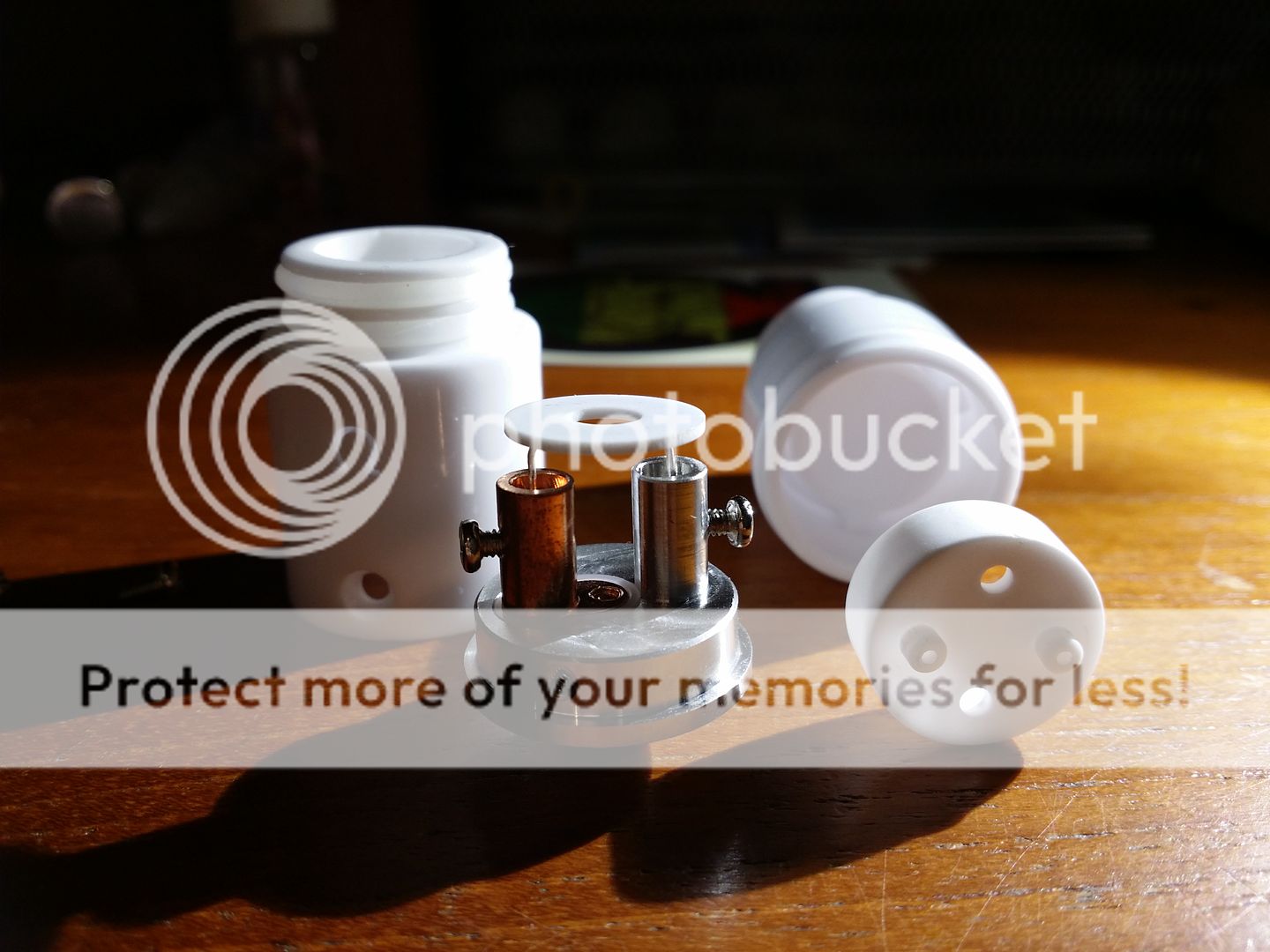
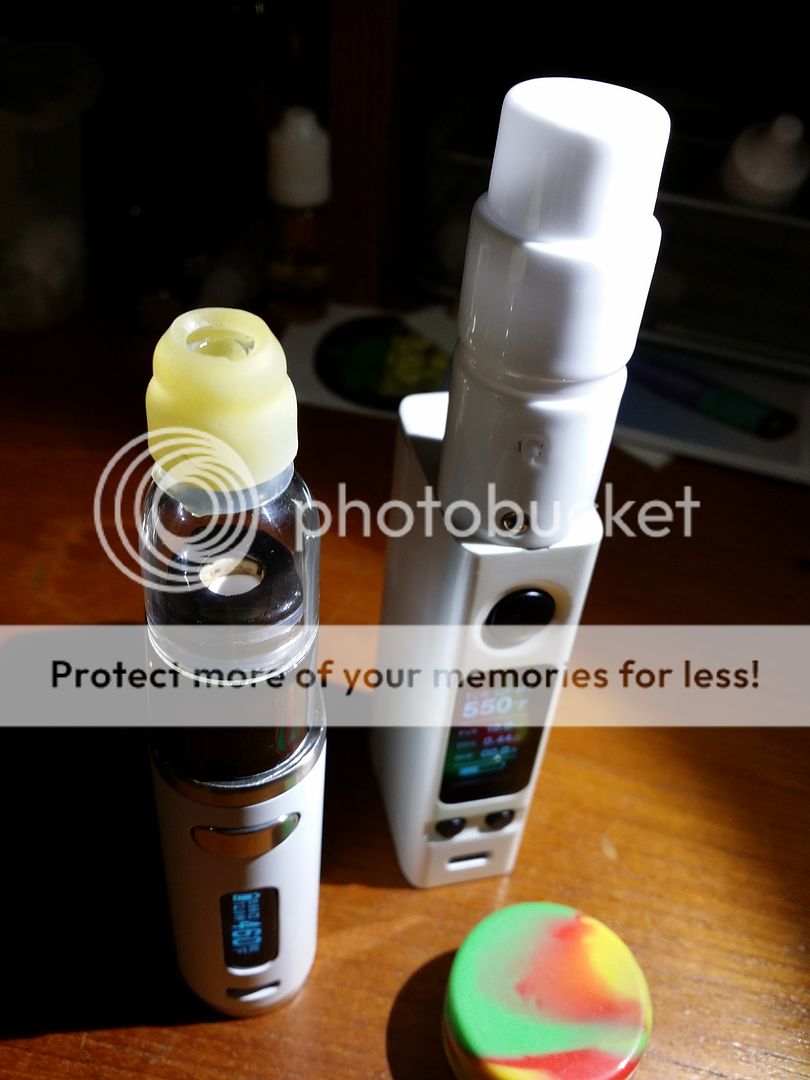
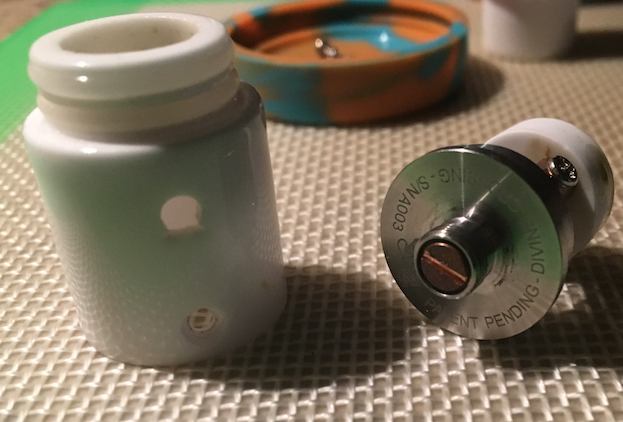
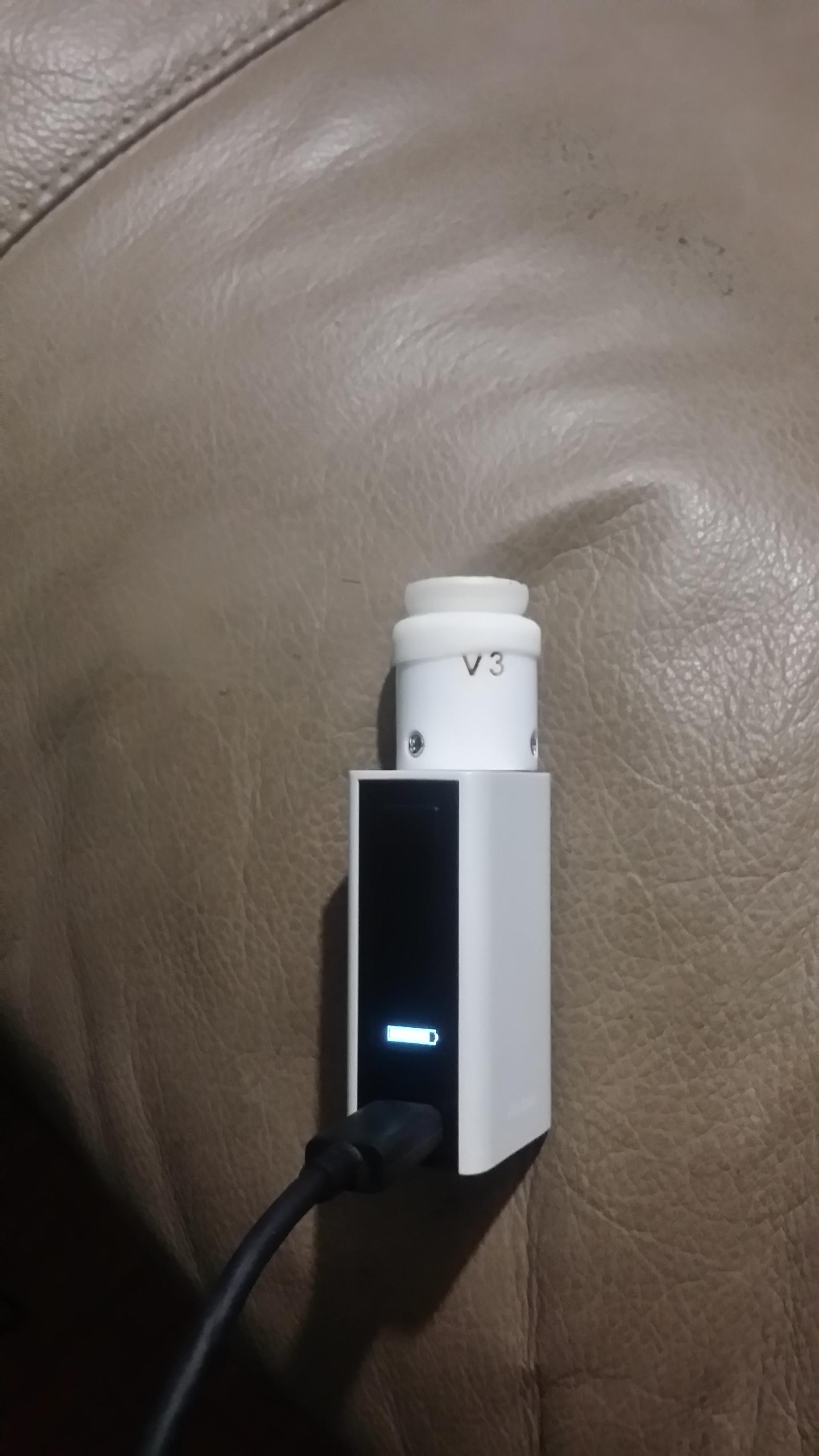
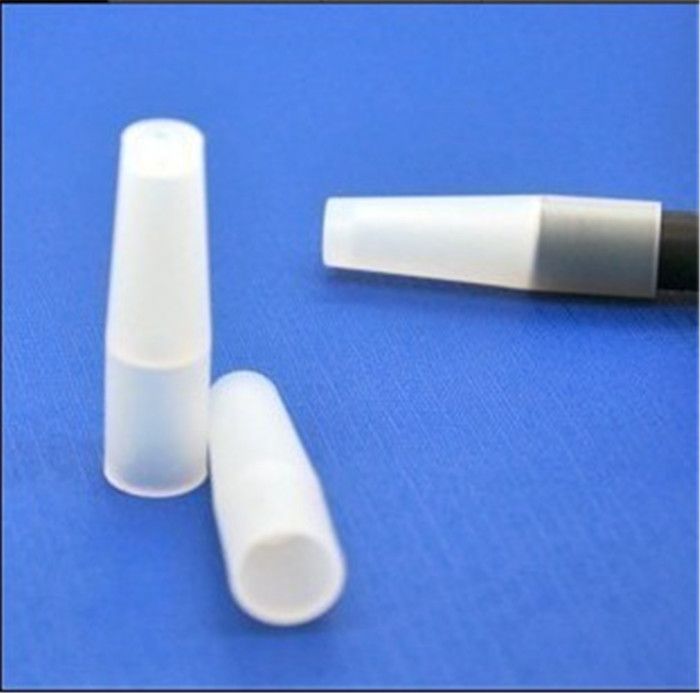
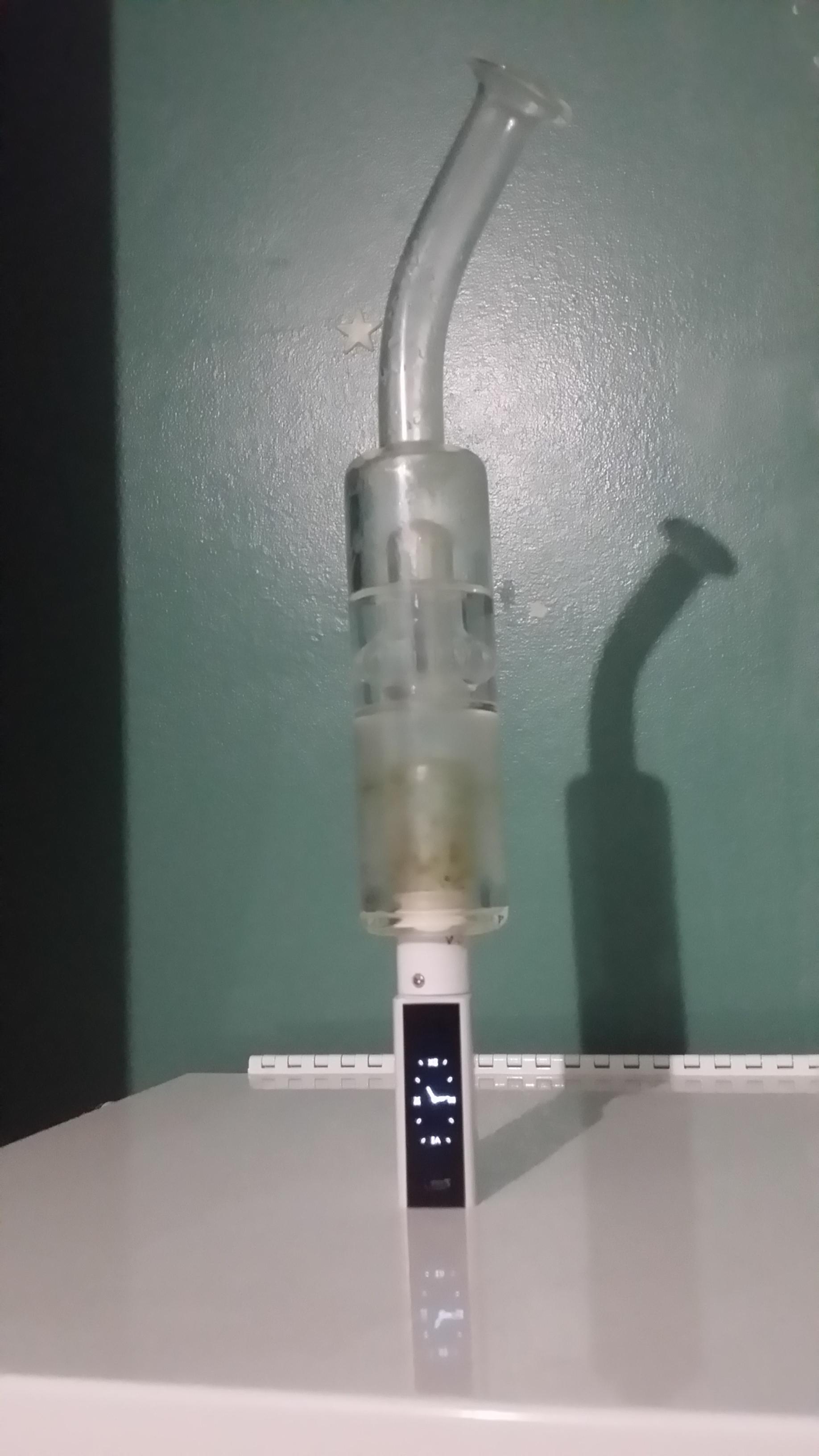


 and I'm looking at a broad picture of the donut, not the hot and cool spots (kind of an average, thats good?) so I would love to see what you guys with thermocouples and potentially better IR thermometers will observe.
and I'm looking at a broad picture of the donut, not the hot and cool spots (kind of an average, thats good?) so I would love to see what you guys with thermocouples and potentially better IR thermometers will observe.

 And it would also peak to around 430F sometimes before settling anyhere from 370-390 when asking the mod to reach 330F
And it would also peak to around 430F sometimes before settling anyhere from 370-390 when asking the mod to reach 330F  This poor showing could also be partially explained by my test methods not accurately representing real-world usage conditions, but this degree of temp spiking upon reaching protection was not observed at all on 2 different joyetech mods.
This poor showing could also be partially explained by my test methods not accurately representing real-world usage conditions, but this degree of temp spiking upon reaching protection was not observed at all on 2 different joyetech mods. 
 I'm playing around with TCR figures between 145-160 now for the pico, but, cant decide whether I want to try and minimize the overshoot / peak temp or get a more accurate post-protection temp, or how different TCR #'s in this range will actually work during real usage? More testing is needed
I'm playing around with TCR figures between 145-160 now for the pico, but, cant decide whether I want to try and minimize the overshoot / peak temp or get a more accurate post-protection temp, or how different TCR #'s in this range will actually work during real usage? More testing is needed 

 Like fern implied, this new donut is proving to be at least as adjustable to different users' preferences as the old one.
Like fern implied, this new donut is proving to be at least as adjustable to different users' preferences as the old one. 
